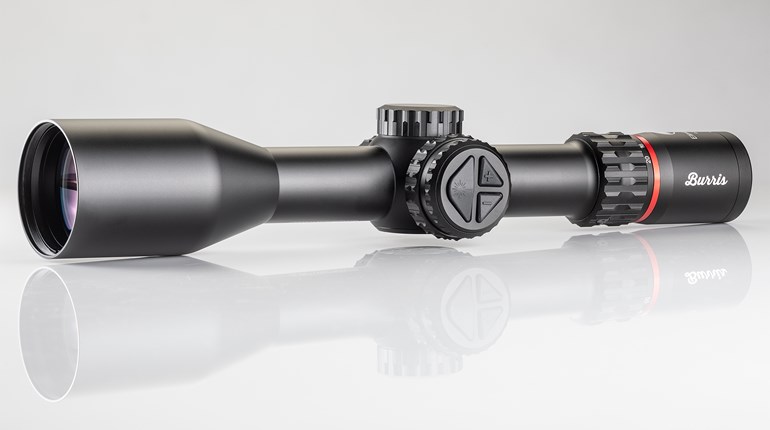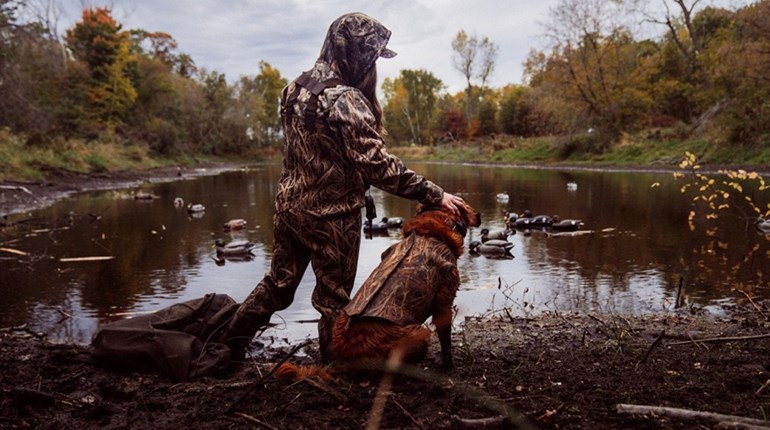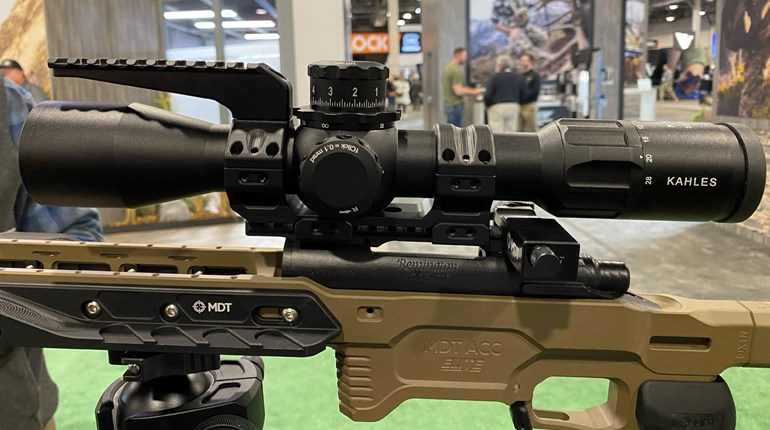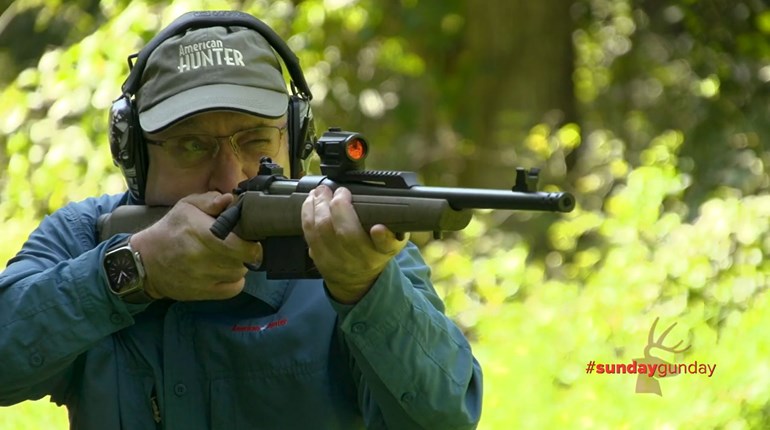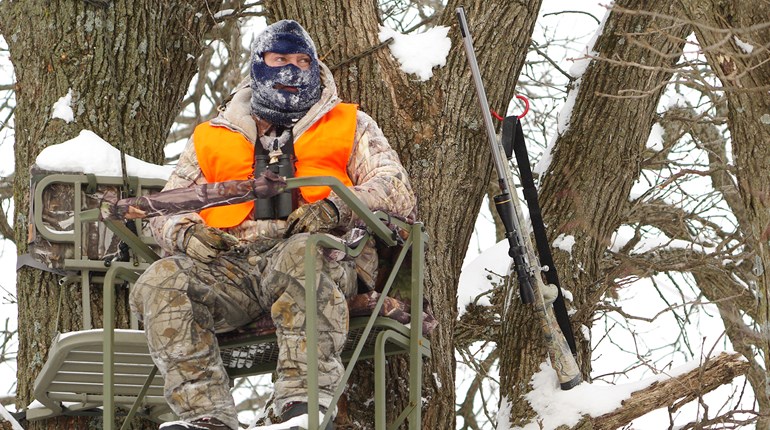
Heat waves rippled across the plains, turning distant antelope into dancing, weaving apparitions. Ankle-high weeds and grass surrounded us, offering the only available cover for hundreds of yards. There was one good buck in that bunch of dancing dervishes, and we had been working for several hours, trying to close within shooting range. But the absence of cover, the multiple eyes of his harem of bodyguards, and the constant movement of the rutting herd was making the task a challenging one.
We’d managed once, but the buck stood ridgelined with a distant ranch headquarters directly beyond him. No way was I going to take that shot. Bellies and elbows in the dust, we crawled ahead. The buck and his harem were drifting to the right, offering a faint ray of hope that he’d move off the ridgeline and present a shot.
Hunting pronghorn antelope across wide-open expanses can be one of the most fun and action-filled adventures the West has to offer. Not only is the quarry highly visible, they also often move during daylight hours, giving ample opportunity to spot and stalk them. Graceful and cunning, they rely primarily on their superb eyesight and fleetness afoot to avoid predators. As a result, they can be rather difficult to get close to, and shot opportunities are often long and challenging.

Rifles for Pronghorn
An accurate bolt-action rifle is my preferred tool for hunting the wide-open territories inhabited by speed goats. A good, mid-weight design is ideal—something heavy enough to offer stability and shootability, but not so heavy that lugging it about the prairie becomes a chore. Get yours chambered in a cartridge that bucks wind and carries energy well, such as the 6.5 Creedmoor, 6.5 PRC, 6.8 Western, .280 Ackley Improved or 7mm Remington Magnum. Equip it with a good bipod by Harris, Atlas or Javelin, and buy a superlight “rear bag”—a smallish bag to tuck under the rifle’s buttstock as a rear support when taking long, challenging shots. Lastly, mount a quality hunting scope atop it.

Riflescopes for Pronghorn
Your pronghorn scope should have three things: First, good glass, because if you can’t see well at long distance and under challenging conditions you won’t have much luck finding and shooting pronghorns. Second, a dial-type turret, which will help you make those long, tough shots. Lastly, durability to withstand the abuse inherent to hard hunting and long stalks.
Personally, I prefer a scope with a low end of 2.5- or 3-power, because there are times (peeking over a sage-covered ridge, for instance) when a close shot becomes likely. You need the ability to zoom out (low power) for a wide field-of-view during those scenarios.
I prefer my scope to have a top end of 14- to 18-power, and honestly, I only use the top magnification as a mini-spotting scope, to study and evaluate an animal at extended distances. When I take a shot, even a long one, I like to have my scope turned only halfway up, maybe 7- to 9-power. That way I have a larger field-of-view for acquiring targets, and I can maintain my view of the animal through the shot, spotting my impact.
Lots of shooters and hunters fall into the “bigger is better” trap with their hunting scope. They buy a high-magnification scope and turn it all the way up to 24 (or whatever) power when shooting at an animal. It makes it really hard for them to rapidly acquire their target, and they inevitably loose sight of their target during recoil, which drastically reduces their chance for a follow-up shot, should one become necessary. Don’t be that hunter.

Mount your scope in good quality bases and rings such as Talley’s lightweight alloy one-piece mounts. Add a top-ring bubble level, also from Talley, so that you can check level when taking those long, challenging shots. Zero your rifle at 200 yards, work up ballistic data and have a custom turret cut to match your rifle’s ballistics. (For a step-by-step guide on how to do this correctly, check out my article, “How to Set Up Your Rifle and Scope for Long-Range Dialing.”) Okay, you’re all set to go.

Optics for Pronghorn
Now that your rifle is ready, it’s time to talk about the optics you’ll need for your pronghorn hunt. Of course, you can get by with much less, but here are the optics needed to complete an ideal pronghorn hunting setup: These should all be the best quality you can possibly afford.
First, a good 10x42 binocular. You will use this to locate distant antelope, and to rapidly assess nearby goats. My preferred setup is a 10x42 binocular/rangefinder combination, because it eliminates the need to carry a separate rangefinding unit.
Next, you’ll want a rangefinder capable of reliably hitting on “soft” targets like deer and pronghorn out to ranges of at least 800 yards. Ideally (as mentioned above) this rangefinder will be incorporated into your binocular, but if not that’s okay; lots of great stand-alone units are available and work perfectly well.
Lastly, get a good spotting scope. Avoid cheap models, as they won’t do much for you beyond making you cross-eyed. I like a semi-lightweight model like a 15x-45x-65mm because it’s light enough to cross over into my backcountry hunting. However, if you never plan to carry yours into the wilderness, a big spotting scope with an 85mm objective will be awesome for viewing distant pronghorn. Use your spotting scope to study distant antelope—see if there is a buck present and determine how good he is. Additionally, a buddy can use it to spot for you when you take that tough shot.

Tactics for Pronghorn
Okay, now we’re to the fun part. Chasing speed goats can be incredibly exciting, especially if you don’t get to do much spot-and-stalk hunting during your normal hunting adventures.
Once you’re in pronghorn territory, find a good point of vantage. This may be a hill, ridge or rimrock. Often it will be the seat of your truck; in some areas you can drive and glass to good effect. Now, put your binocular to use. Scan flats, basins and meadows; anywhere you think pronghorn might be. Look for white-and-tan spots. Pronghorn are usually easy to see, so don’t worry about glassing really slow and meticulously.
Once you’ve spotted goats, look for the telltale black jawline and horns that mark a buck. There may be one or more with each group of does. Study the area within 400 or 500 yards of any does, because often satellite bucks will hang along the fringes of doe groups. Sometimes these bucks may be larger than the herd buck. If the pronghorn are distant, or if there are several bucks to assess, now is the time to break out the spotting scope. Watch and study the goats for a time before making any move. You want to know which is the best buck, what their mood is like (sleepy, spooky, restless, hungry) and what the prevailing wind is doing before planning your stalk. If there is water within a mile or so, watch for signs that the herd is growing thirsty and might move toward water.

Once you’ve figured out which buck to target and what mood the herd is in, plan your move. Try to approach from a downwind or crosswind direction, using every bit of available cover. Make your way to an elevated position, if possible, that will give you an in-range view of the goats. Move very carefully into shooting position. Antelope have vision tantamount to a superb binocular and will spot any careless movement. Pick out your target buck, get a good range reading and settle in for the shot. Press the trigger, and you’ve got your pronghorn.
If it happened like that, I’m impressed.
More likely, you messed up your stalk, or the antelope moved, or something else went awry. Those goats are long gone, and you feel like throwing your hat on the ground and jumping on it with both boots. Not to worry! You’re hunting pronghorn, and more chances will come your way. That’s the awesome part about hunting speed goats, and eventually it’ll work out just like in your daydreams.

Conclusion
As we crawled ahead that hot August day, we pushed a bovine decoy along ahead of us, creating some cover. It was the only thing we had on that flat, coverless prairie, and while the antelope eyed the decoy in askance, they didn’t spook. Finally, our opportunity came. My son Josiah peered through the spotting scope as I readied for the shot, ranging the buck at 486 yards. The buck was circling his band, and stopped quartered toward me. I cranked the dial on my scope, settled the crosshairs on the point of buck’s shoulder, and pressed the trigger. The shot was perfect, and 10 seconds later he lay still on the prairie. It was the perfect culmination to my hunt, made possible by good optics, an accurate rifle and dogged perseverance.













